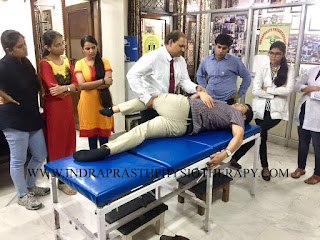COCCYDYNIA - Coccydynia is often caused by an injury, but it may occur seemingly
spontaneously. There are many causes of tailbone pain that can mimic
coccydynia, including sciatica, infection, pilonidal cysts, sacroiliitis, and fractured bone.Inflammation of the tailbone is
referred to as coccydynia. Coccydynia is associated with pain and
tenderness at the tip of the tailbone between the buttocks. The pain is
often worsened by sitting.
One way of classifying coccydynia is whether the onset was traumatic versus non-traumatic. In many cases the exact cause is unknown and is referred to as idiopathic coccydynia. Coccydynia is a fairly common injury which can often result from falls, particularly in leisure activities such as cycling. Coccydynia is often reported following a fall or after childbirth. In some cases, persistent pressure from activities like bicycling may cause the onset of coccyx pain. Coccydynia due to these causes usually is not permanent, but it may become very persistent and chronic if not controlled. Coccydynia may also be caused by sitting improperly thereby straining the coccyx.
The main symptom is pain and tenderness in the area just above the buttocks.
The pain may:
One way of classifying coccydynia is whether the onset was traumatic versus non-traumatic. In many cases the exact cause is unknown and is referred to as idiopathic coccydynia. Coccydynia is a fairly common injury which can often result from falls, particularly in leisure activities such as cycling. Coccydynia is often reported following a fall or after childbirth. In some cases, persistent pressure from activities like bicycling may cause the onset of coccyx pain. Coccydynia due to these causes usually is not permanent, but it may become very persistent and chronic if not controlled. Coccydynia may also be caused by sitting improperly thereby straining the coccyx.
The main symptom is pain and tenderness in the area just above the buttocks.
The pain may:
- be dull and achy most of the time, with occasional sharp pains
- be worse when sitting down, moving from sitting to standing, standing for long periods, having sex and going for a poo
- make it very difficult to sleep and carry out everyday activities, such as driving or bending over



































